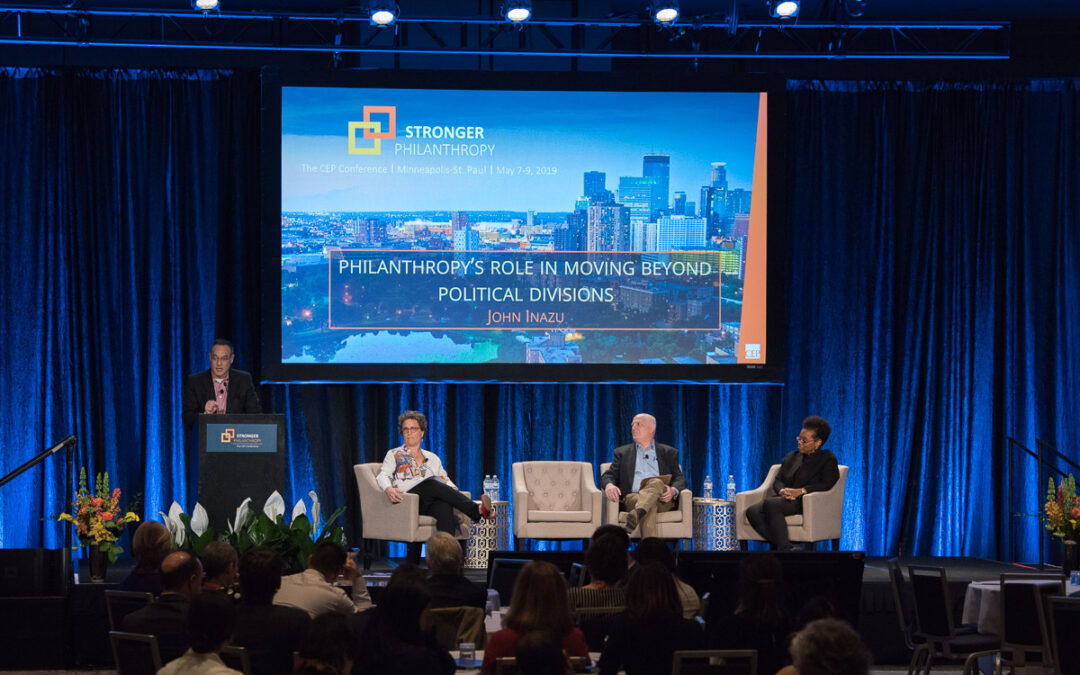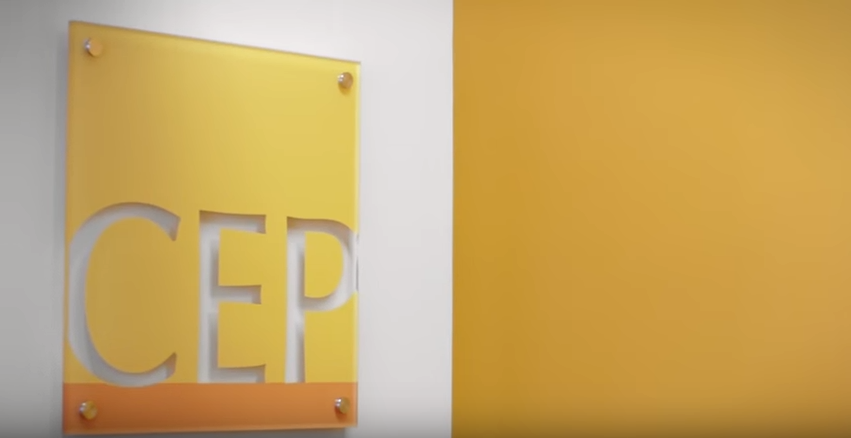Thanks to those of you who recently spent time with us in Detroit during our national conference, Pursuing Results: Effective Foundation Practice. Whether it was an idea from a breakout session, an insight from a plenary, or a promise to keep talking with a colleague, I hope the conference made your trip to the Motor City worthwhile.
In the days to come we’ll share videos, presentations, and handouts from various sessions. But for now, I wanted to touch on a topic that Ellie Buteau, CEP’s Vice President of Research, raised in the opening plenary, “In Search of Impact.”
In an effort to understand why foundation CEOs were so likely to credit their own organizations with having a greater impact than the field as a whole, Ellie offered a couple of hypotheses. Did CEOs, like so many of us, simply suffer from a case of positive illusions, leading them to overestimate their own achievements? Or, was there was a lack of communication among foundations—were they not sharing success stories with one another, causing them to underestimate the achievements of other foundations?
Or, Ellie asked, was it a combination of these two?
It’s a critical question, one we’re looking forward to exploring in a conversation with you all when we release the report later this year.
But in the moment, as the conference unfolded, I found myself thinking about the other side of communications—listening. Listening when what is being shared challenges your beliefs, your assumptions, or just your general sense of how things work. I began to wonder if the ability to actively listen—to really absorb and reflect on what was being said—was perhaps the common thread that linked Ellie’s two hypotheses.
In part, our ability to listen is inhibited by how we frame the things in our world. For foundations, I think there’s often a clear framework around the relationship between funders and grantees, one that might influence what is and isn’t heard.
As one person observed during a plenary session, nonprofits are a foundation’s “arms and legs,” which could imply that foundations are the brains in this “body.”
That may be true in the case of some foundations, and certainly CEP’s research shows that many nonprofits want support above and beyond the grant from the large foundations that fund them.
But, having worked for a few nonprofits in my career, I believe there is much truth in another perspective that I heard (and I’m paraphrasing here): “Foundations talk of ‘our’ work, but the truth is, we don’t do any work. Not really. Our grantees do all the work.”
Some of that work was on display if you listened to Dan Cardinali, president of Communities In Schools, and Majora Carter, CEO of Hometown Security Laboratories. At different points and in different ways, each talked about the difficulty of finding ways to keep kids in schools and revitalize urban areas, respectively— and then the additional task of funding that work.
During the closing plenary Steve McCormick, president of the Gordon and Betty Moore Foundation, touched upon the different sort of work that foundations face. He described going from the endless cycle of fundraising at The Nature Conservancy to a leading a five-billon dollar foundation that sometimes struggled to give away enough money in one year.
If you’re a nonprofit, that probably doesn’t sound like much of a challenge and it might simply confirm your perception that it’s good to be a foundation CEO. And yet, if you were listening closely to Steve, you learned that it’s not so simple. Under gentle cross-examination from moderator Fay Twersky, director of the Effective Philanthropy Group at The William and Flora Hewlett Foundation, Steve confessed that Moore was not making the number of operating grants he was calling on foundations in general to make. (That exchange alone is worth a blog post, for it highlights what Ellie was discussing in her opening plenary—what gets in the way of impact?)
Conversely, if you were an attendee listening to Dan Cardinali talk about nonprofit performance measurement, you caught a quick insight about how nonprofits study and categorize foundations—just as foundations scrutinize nonprofits. Dan revealed that his team had come to categorize foundations according to their theory of change, recognizing that foundations tended to view potential grantees through this lens. Dan and his team quickly learned to adapt. So, if you’d been tagged as a “capacity builder,” Communities In Schools would approach you accordingly, taking care to speak to the theory of change that resonated most with you.
It was a humorous yet pointed challenge to the perspective that foundations hold all the power.
If you listened to Harvard Professor Roland Fryer, you had to wonder what it would take to actually close the achievement gap between black and white students in America. You may have a theory on what’s driving the achievement gap. Professor Fryer has data. Tons of it. And yet, the gap remains, and as he said, it’s hard to find people who will acknowledge and respond to the evidence, as opposed to simply sticking to their own theories.
You could tell Roland was struggling to answer why it was so hard to get people to listen.
Maybe it’s a question of being too smart.
During the conference, I heard several attendees talk about the incredible pool of talent available to them as they sought to fill vacant or newly created staff positions. More than once I heard a foundation leader say, “I’d never get hired today.”
At any foundation, you’re likely to have a group of smart, passionate people armed with lots of ideas about what might work, backed by lots of money. Is it any wonder that the response to what Steve called a “VUCA” moment (one that is volatile, uncertain, complex, and ambiguous) is to seek a solution in another theory, a fresh insight, a new best practice?
Maybe a foundation’s strength can become a weakness when it comes to sitting down and listening long and hard.
As Dan said, building a successful organization ends up being a lot of hard work that takes place over many years. He likened it to raising a family. Yes, there are milestones like birthdays and first steps and graduations. Most days, though, it’s simply the routine of getting your kids off to school, making sure the homework is done, trying to provide a good home, and talking things through with your partner.
In the case of foundations, those partners are the grantees. How much are funders really talking things through with their grantees and supporting their improvement day-in, day-out?
Which brings me back to Ellie’s closing slide and the specter of insufficient communications.
What can foundations do, in addition to hiring smart, passionate people and giving grants, if nonprofits are doing a lot of work? Maybe they can listen even harder. Peter Sims, entrepreneur and author of Little Bets, talked about the importance of asking questions—of yourself, of the data, but above all, of your market, the people to whom you hope to provide something of value.
Here’s hoping folks were listening.
If you attended the conference, you’ll have a chance to talk to us, via the survey we sent to you. Please take a moment to fill it out—I promise, we’ll be listening.
Mark Russell is Director of Communications and Programming at the Center for Effective Philanthropy.


